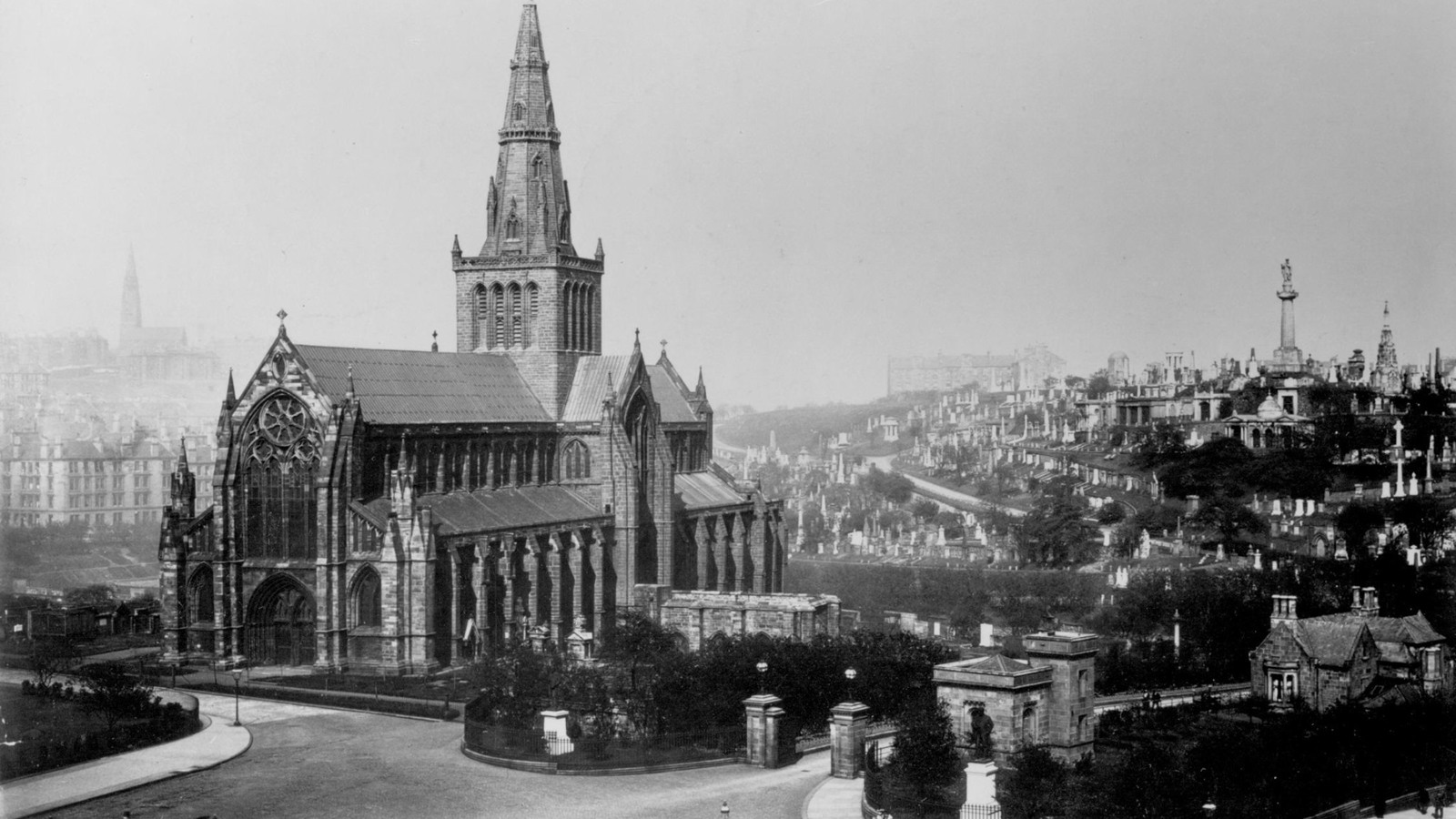The Glasgow Necropolis - Times Past

In partnership with the Glasgow Times, our archivists are exploring Glasgow's fascinating history. This week, Nerys Tunnicliffe writes about the Glasgow Necropolis.
Located next to Glasgow Cathedral the Glasgow Necropolis, with its elaborate tombs and memorials, is an atmospheric site. It has seen 50,000 burials since it opened in 1833. We hold many records giving unique insight into the history and development of the cemetery. It passed into the care of the council in 1966 and has become a popular tourist attraction.
It's the final resting place for many notable Glaswegians from Lord Provosts such as publisher William Collins, philanthropist Isabella Ure Elder and the fire officers killed in the 1960 Cheapside Street and 1972 Kilbirnie Street fires. Monuments include designs by Alexander ‘Greek’ Thomson and Charles Rennie Macintosh. The first burial was at the Jewish section, of Joseph Levi a jeweller. Burials of other faiths from Quakers to Catholics have followed.
The Merchants House of Glasgow purchased the rocky hill as part of the Wester Craigs lands in 1650, for the stone quarry on the estate. Fir trees got planted on the western grounds too difficult to quarry from, and the area became known as Fir Park. When the Fir trees began to die out due to the city’s industry, other trees such as elm got planted. In 1825, the column and statue to John Knox, funded by public subscription, was a centrepiece.
Records show the Merchants House considered opening a new garden cemetery at Fir Park from 1828. Future City Chamberlain John Strang wrote ‘Necropolis Glasguensis’ in 1831 in support of the idea, arguing that ‘A garden cemetery and monumental decoration afford the most convincing tokens of a nation’s progress in civilization…’.
The idea had a commercial aspect with profitable fees for plots. There was a real need for more planned urban cemeteries. Glasgow’s ever-increasing population from the early 1800’s led to greater demands for burials. Poor housing and sanitation affected morality rates which led to burial grounds becoming overcrowded, prompting hygiene concerns.
The emerging middle class wanted better sites for commemoration of their deceased. The fashion for elegant and ornate funerals and monuments, reaching its height in Victorian times, began in the 1830’s.
The Necropolis, was intended to be a beautiful and sanitary non-denominational cemetery, like the park inspired Parisian cemetery Pere Lachaise. There was an emphasis on planning, landscaping, trees and shrubs. The Necropolis’ first superintendent was a garden landscaper, George Milyne. There were strict rules for all monument plans to be submitted for approval. Fines for any visitors interfering with plants, fences or tombs, and no dogs or cattle permitted on the grounds! The careful design and its 3,500 eclectic monuments makes Glasgow Necropolis the stunning and historic site it is today.
